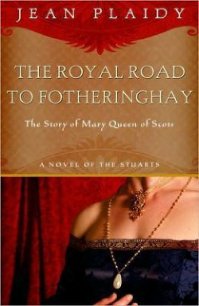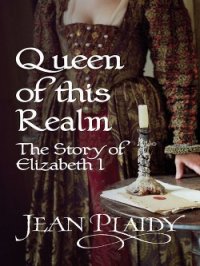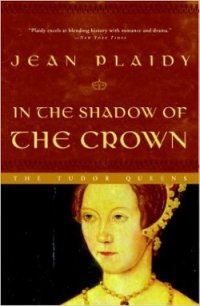The Captive Queen of Scots - Plaidy Jean (читать книги онлайн бесплатно без сокращение бесплатно txt) 📗
LONDON WAS WILD WITH JOY. The fair devil of Scotland was no more. Their Queen was safe; Protestant England was safe. Light the bonfires! This was as good an excuse as any to dance and make merry.
The King of France received the news in sorrow, and there were memorial services in Notre Dame for Mary Queen of Scots. The King of Spain heard the news with his usual serenity. In his shipyards building should go on apace. The death of Mary Queen of Scots would make no difference to the dream of Philip II.
Elizabeth was uneasy. I never desired it, she said. It was never my will that she should die.
But she spoke thus for her Catholic subjects, and she rested happier in her bed after the death of that hated rival.
And all those who had lived and served Mary continued to mourn for her.
Jacques Nau and Gilbert Curle remained long in prison, for their obstinacy had not endeared them to their jailors. Bessie Pierpont was soon released from the Tower, but she did not marry Jacques Nau who continued to be a state prisoner. Eventually she settled down with a Yorkshire Squire named Richard Stapleton; and when he was at length released, Nau returned to his native France and there married a Frenchwoman. Gilbert Curle found his faithful wife, Barbara, waiting for him on his release; and with his daughter Mary, whom the Queen had baptized, and his sister Elizabeth, went to Antwerp where they lived happily for the rest of their lives.
Jane Kennedy married Andrew Melville; and on their return to Scotland they were favored by King James for the manner in which they had served his mother. It was this favor, however, which resulted in Jane’s death, for when she crossed the Firth of Forth on her way to greet James’s bride, Anne of Denmark, the boat in which she was traveling capsized and she was drowned.
Mary’s Skye terrier refused all food after her death and died of his misery.
IN ORDER TO SHOW THE WORLD that she had not wished the Queen of Scots to die, Elizabeth ordered that she should be buried in state in Peterborough; and on the black velvet pall which covered her coffin a gold crown was placed as it was borne to the Cathedral. Here it remained for twenty years, until her son James ordered that it should be removed to Westminster Abbey and placed in the center aisle of Henry VII’s Chapel.
Many were the friends who mourned Mary. Seton who herself had not long to live in her convent; Jane and Andrew Melville; the Curles; Bessie; Jacques; all her friends in Scotland; all her friends in France; and there were some in England, for all who had known her—even such as Shrewsbury and Paulet—could not help but respect her.
It was said that the Queen of Scots was dead. But for many it was as though she still lived, because for them—and for many who came after—she would never die; and in the years to come there would be those to love and mourn her.
Reader’s Group Guide
ABOUT THIS GUIDE
Against a backdrop of royal pageantry, political strife, and bloody uprising, The Captive Queen of Scots contains many themes: duty and personal freedom, tradition and individual expression, love and heartbreak, betrayal and loyalty. This guide is designed to help direct your reader’s group’s discussion of The Captive Queen of Scots.
QUESTIONS FOR DISCUSSION
1. “It was difficult for any man not to be touched by Mary. Her beauty was indestructible, but it was not merely her beauty which was appealing; it was a certain helplessness; a certain fragility; she was completely feminine, possessed of all that was most appealing to men,”. Do you agree with Melville’s sentiment? What was your initial opinion of Mary, Queen of Scots? Did your feelings about her change as you read The Captive Queen of Scots?
2. Bothwell’s influence hangs heavily over Mary for the entire book. “She thought of Bothwell then and she was sick with longing for him,”. Why is Mary so captivated by him, and obsessed with finding him? What do you think would have happened to Mary if she didn’t marry Bothwell? Would she have met with the same fate? Why or why not?
3. How are Mary’s relationships with the men of her court different than those she had with women?
4. Throughout the book, Mary characterizes herself as impulsive. What are some examples of her impulsivity? Was it beneficial for her to be impulsive? Why or why not?
5. Rumor and innuendo have enormous influence over the lives of the characters in The Captive Queen of Scots. What are some examples of destructive rumors, as well as beneficial ones? Why does rumor hold so much power? How does Mary employ it?
6. There are many prisons depicted in The Captive Queen of Scots, both physical and metaphorical. Discuss.
7. “All her life she had recovered quickly from adversity because her optimism had been one of her strongest qualities and, she guessed, always would be,”. What do you think was behind Mary’s optimism at this point in the book? How did that optimism change the longer she was imprisoned?
8. Mary shows grave lapses of judgment throughout the book in terms of the people with whom she places her trust. What are some examples of this? Why does she put her faith into people who she senses might betray her?
9. “[Mary] was a woman who needed love,”. Is this an understatement? What do you think was the reason Mary craved affection?
10. What do you think of the jealousy that Elizabeth holds for Mary, and the antagonism she continually inflicts upon her? What do you think might have been behind it?
11. “He had often reminded her that he was her brother and that must mean the ties between them were strong,”. Did this passage, or another, foreshadow Mary’s bastard brother Jamie’s later betrayal of her? What did you think of Jamie, and the fate he met?
12. Jean Plaidy fills The Captive Queen of Scots with vivid descriptions and imagery—of the period’s dress, pageantry, customs, castles, even the countryside. Which images stood out for you? Based on Plaidy’s depiction of life in medieval Europe, do you think you could have lived in these times?
13. Mary’s execution is particularly violent. Do you think her persecution and eventual death would have been less brutal if she were a man?
14. Mary, Queen of Scots is one of medieval history’s most fascinating and enduring figures. In reading the story of her life in the first person, was Mary’s legend enhanced for you? Why or why not?
An Excerpt from The Queen’s Secret




